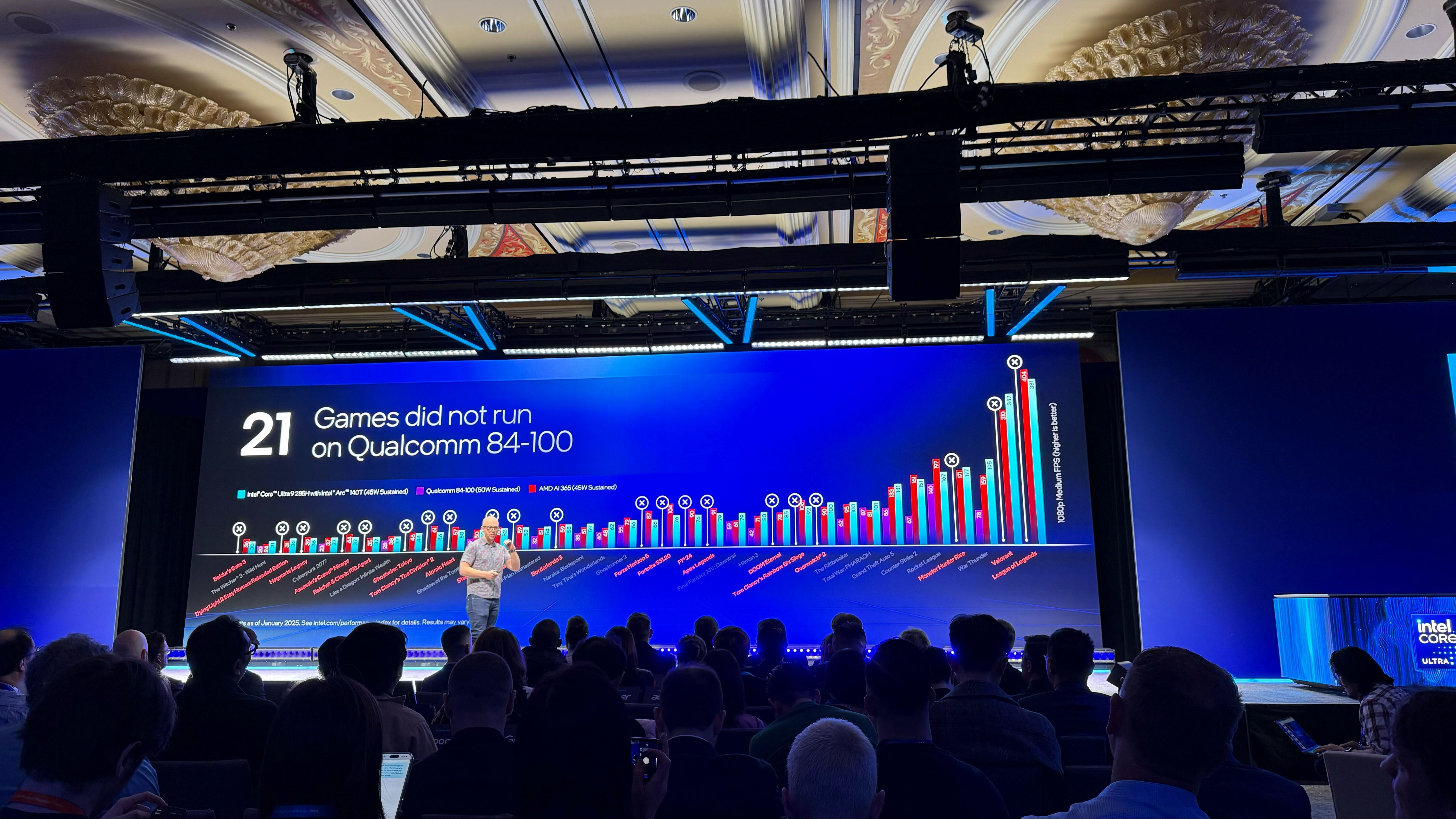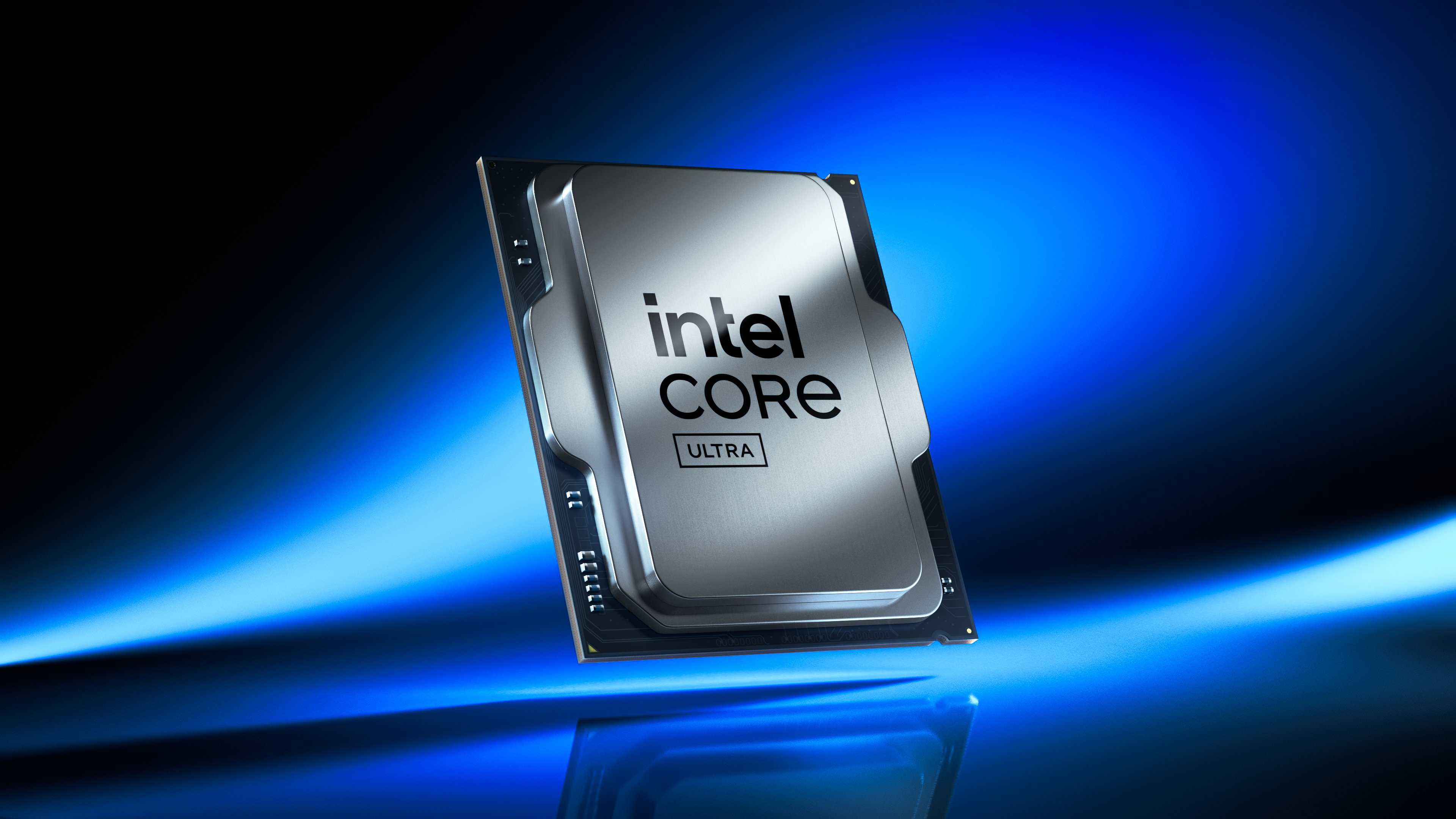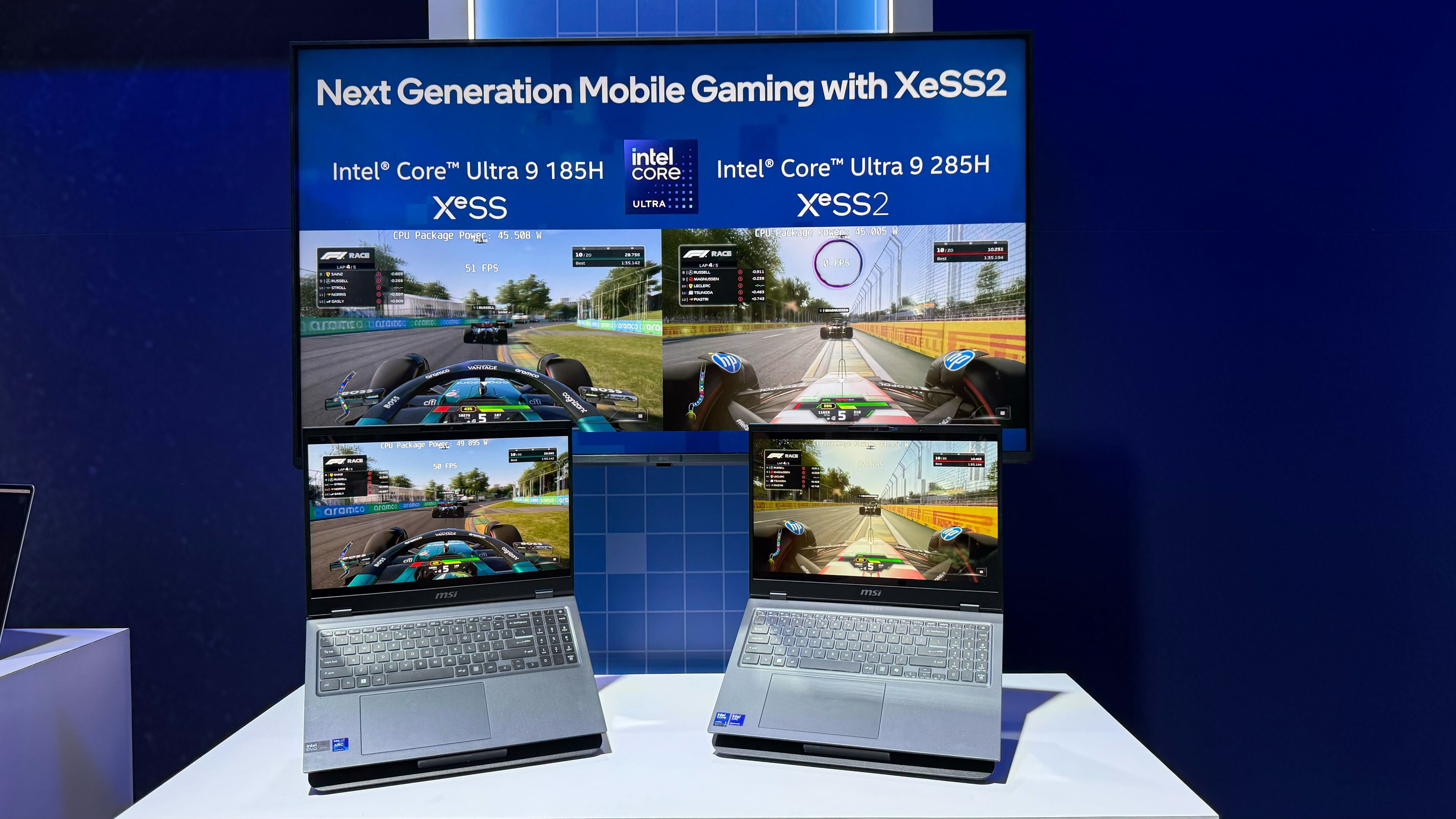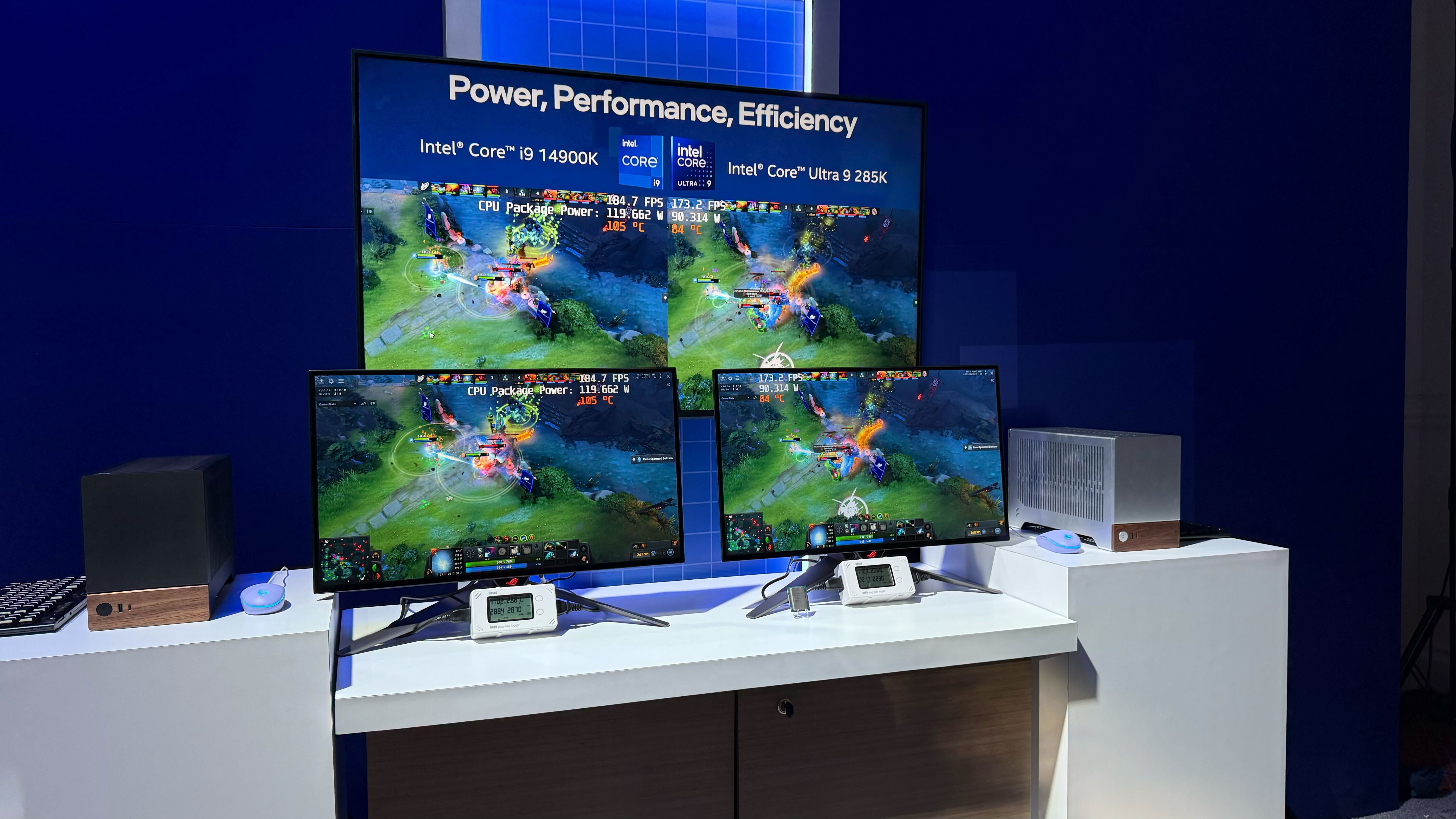"Arrow (Lake) is a wonderful, wonderful notebook product,” Intel VP shares what to expect from Intel's new processors in 2025
Gamers may not want an NPU right now, but Intel believes in future-proofing

Intel's Arrow Lake got a bad rap in 2024, which makes the launch of the mobile variant all the more critical for the chipmaker.
Intel kicked off CES this year by launching the Intel Core Ultra 200H and HX series processors, which help round out the Arrow Lake" family of chips with high-performance mobile variants. The H and HX series processors are designed for high-performance thin and light systems, professional workstations, content creation, and gaming laptops. So, performance and power efficiency are more critical on these platforms than on their desktop counterparts.
Laptop Mag sat down with Intel's VP of AI and Technical Marketing, Robert Hallock, before and after the launch to ask about the state of Arrow Lake in 2025 and what we can expect from the chipset on the laptop side when systems ship later this year.
Intel Arrow Lake 200S fixes

While desktop and mobile processors aren't the same, the issues that plagued Arrow Lake S and K at launch are concerning for Arrow Lake H and HX on mobile. The chips aren't identical, but they have a similar architecture, including the Lion Cove and Skymont CPU cores.
So naturally, we had to ask about the desktop launch. Hallock tells Laptop Mag, "We've narrowed it down to about five issues that affected Arrow Lake S at launch from performance or functionality point of view. Of the five... One was entirely outside of our control. One was kind of outside of our control and the other three were definitely our doing. And we've resolved four of the five issues either through Windows Update or BIOS updates that already exist in the field today."
Hallock also stated, "What you'll see from me at CES is that with a firmware update, we will be able to finally close all the issues. So by the first half of January here that that To Do List will be done."
Of course, even with the performance and stability fixes Intel has worked on with BIOS, Windows Updates, and Firmware Updates, the platform will still offer gaming performance comparable to the 14th-generation processors. However, it will be doing so at a lower power threshold.
Get The Snapshot, our free newsletter on the future of computing
Sign up to receive The Snapshot, a free special dispatch from Laptop Mag, in your inbox.
Intel Arrow Lake H and HX expectations

With the scuffed desktop launch out of the way, we were able to focus on the 200H and HX mobile processors.
As for what makes Arrow Lake H and HX so attractive? Hallock tells Laptop Mag "The thing that excites me most about Arrow H and HX is what Arrow does to power consumption overall. You saw an Arrow (Lake) desktop. That wattage was way down for the same workload, kind of same frame rates. Raptor (Lake) versus Arrow (Lake). That matters so much more in mobile."
After all, "if you can shave off... 10 to 20 watts and still deliver the same performance from a CPU point of view. That's 10 to 20 watts you can put into the graphics on the same shared thermal solution and that has way more upside, way more benefit for the overall health and performance of that gaming system. And it also matters a great deal for a product like Arrow (Lake) H. Which, you know from IFA, has large integrated graphics. We can allocate more integrated graphics power budget than we would be able to on a product like Raptor (Lake) because of its CPU power consumption."
Because of Arrow Lake's lower CPU power consumption, it can offer more versatility in shared thermal solutions in constrained environments which is key for mobile computers like laptops or gaming handhelds.
And so, "Arrow (Lake) is a wonderful, wonderful notebook product."
Arrow Lake's NPU may be controversial, but there's a reason
Much like how integrated graphics chips in desktop processors was a controversial choice at the start, iGPUs can do more and more every year and the same will likely be true of the NPU in time.
In a roundtable-style interview at CES, Hallock compared the NPU in the Arrow Lake desktop and mobile processors to an iGPU. "When I first started in PC Hardware, integrated graphics was actually first coming on at the CPU for the first time, and the enthusiast market did not take kindly to that; it was ridiculed: 'Why is it here? I can't do anything with this'... and frankly, you kind of see the same thing about AI from the enthusiast market at large. But there came this point in time where the integrated graphics was suddenly running webpage rendering, browser composting, PowerPoint, Windows user interfaces, scrolling, like it became an integral part of performance and power on that chip, and I think AI is gonna take exactly the same."
So, while hardware enthusiasts may not want a small 13 TOPS (trillions of operations per second) NPU on a CPU, Intel's perspective is that there will be "this gradual evolution towards very widespread availability" that will make the NPU necessary even for desktop users. "And if we don't get the foundation right for that moment, now" Hallock enthused, "we're upside down."
Arrow Lake demos provide proof of Intel's fixes

Intel launched the Arrow Lake desktop K and S series in October 2024, with a focus on power efficiency and AI rather than pure power. However, early reviews of the Intel Core Ultra 200K and 200S desktop processors were underwhelmed by Arrow Lake's performance and efficiency gains, particularly in gaming. While some reviews were consistent with Intel's claims, there was a pretty wide gap in experience across the tech editorial world, which led to its own slate of issues.
Intel has been making the rounds to keep PC enthusiasts informed on the updates and changes Intel has made to bring Arrow Lake 200S and 200K performance in line with expectations. Throughout the last months of 2024, Intel pushed a series of field updates on the Core Ultra 200 desktop series including suggestions to fix issues and get desktop performance in line with expectations. Intel even addressed the Core Ultra 200S and K series to press and industry attendees after the end of the CES keynote and published a video update on the desktop chips during the tradeshow.
The chipmaker even showed a gaming demo of the Core Ultra 9 285K compared to the last generation Core i9 14900K, showing similar performance at a lower power draw on League of Legends. While the Core i9 14900K platform may have gotten a few frames higher in FPS spikes, the two systems averaged about 210 FPS on the Core i9 14900K compared to about 205 FPS on the Core Ultra 9 285K. However, the story doesn't end with frame rates. The Core Ultra 9 285K system ran significantly cooler at 85 degrees Celcius compared to the Core i9 14900K, which ran at around 105 degrees Celcius. The Core Ultra 9 285K system was also running at just 87W power compared to the 120W on the Core i9 14900K.
Intel also resurrected a demo from IFA Berlin 2024, this time with an Arrow Lake twist. Rather than racing a Core Ultra 200H system against AMD and Qualcomm competition, this time Intel raced the Core Ultra 9 285H against the Core Ultra 185H in F1 2024 at 1080p and Medium settings, showcasing the improvements to XeSS in the second generation. While neither platform is going to be competing against a dedicated Core Ultra 200HX gaming laptop, the improvements to integrated graphics gaming capabilities are astounding.
What's Next?

Obviously, Intel's demo suite is designed to show their chips in the best light. However, seeing that Intel can make its claims a reality in person does help with transparency.
Additionally, while benchmark leaks of the Core Ultra 200H have hit the news, leaked benchmarks aren't always trustworthy due to a number of additional factors like platform optimization, driver and firmware updates, and variations in early builds that can make leaked performance unreliable when compared to the finished product.
So we will have to hold our final judgment on the state of Arrow Lake until we can get some of the Core Ultra 200H and 200HX systems into our own testing labs to confirm Intel's performance claims.
Disclaimer
Intel paid for travel and accommodations for CES 2025. The company did not see the contents of this article before publication.
More from Laptop Mag

A former lab gremlin for Tom's Guide, Laptop Mag, Tom's Hardware, and TechRadar; Madeline has escaped the labs to join Laptop Mag as a Staff Writer. With over a decade of experience writing about tech and gaming, she may actually know a thing or two. Sometimes. When she isn't writing about the latest laptops and AI software, Madeline likes to throw herself into the ocean as a PADI scuba diving instructor and underwater photography enthusiast.
